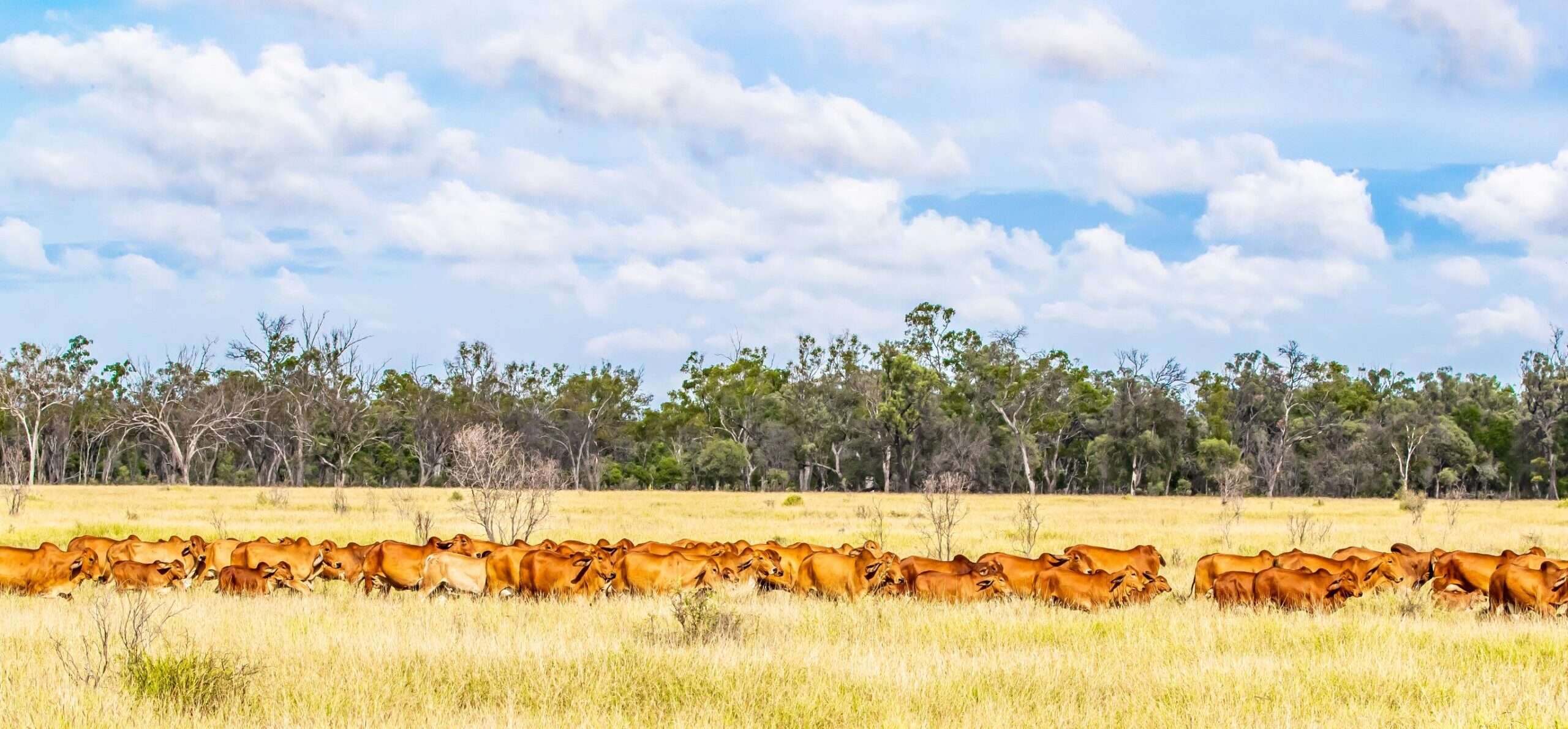The Cooperative Research Centre (CRC) for Cattle and Beef Quality recently identified a simple, indirect criterion that breeders can use on-property to select for beef tenderness. CRC results show strong favourable genetic relationships between beef tenderness and Meat Standards Australia (MSA) overall eating quality (MQ4 score) and the flight time of an animal. An animal’s flight time is an electronic measure of the amount of time taken by an animal to cover ~2 m after it leaves a weighing crush, with fast times indicating animals that have poor temperaments. Flight time is moderately to highly heritable, indicating that good genetic progress can be achieved by selection for the trait. Animals that have poor temperaments, measured by fast flight times, produce progeny that have beef that is tough and of unacceptable eating quality. The genetic correlations between flight time at weaning and a number of carcase and beef quality attributes are shown in Table 1. Genetic and phenotypic correlations range from -1.0 to +1.0 and indicate the degree of relatedness of two traits at either the genetic (next generation) or phenotypic (current herd) level. A zero relationship indicates the two traits are independent of each other.
Table 1. Genetic relationships between flight time at weaning and a number of carcase and beef quality attributes (n = 3,594 Brahman, Belmont Red and Santa Gertrudis animals; NB. low (fast) flight times indicate poor temperament; low peak force values indicate tender meat; low meat colour values indicate bright (good) colour; and high MSA MQ4 and MSA tenderness scores indicate good overall eating quality and tenderness)
| Flight time and… | Carcase weight | 0.05 |
| Retail beef yield percentage | 0.11 | |
| Intramuscular fat percentage | -0.05 | |
| Striploin peak force | -0.53 | |
| Striploin meat colour | -0.22 | |
| MSA MQ4 score | 0.47 | |
| MSA tenderness score | 0.41 |
Phenotypic relationships between flight times and carcase and beef quality attributes were close to zero, possibly indicating that use of best practice processing can overcome problems of beef tenderness associated with poor temperament.
The good news for beef producers is that flight times are best recorded shortly after weaning, early in life, and animals do not need to be slaughtered and the beef sampled to improve beef quality. The flight time measurement is quick, simple, objective, repeatable and heritable, meaning that a single measure of flight time can be effectively used for selection purposes.
Ruddweigh Australia Pty Ltd is currently developing a commercial prototype machine to allow breeders to easily measure an animal’s flight time on-property. The measurement will also be added as a new trait to Australia’s beef genetic evaluation, BREEDPLAN, in the near future.

Measuring flight time
CONTACT:
Dr Heather Burrow, CSIRO Livestock Industries, Rockhampton
Phone: (07) 4923 8139
Fax (07) 4939 8184
Email: heather.burrow@csiro.au

